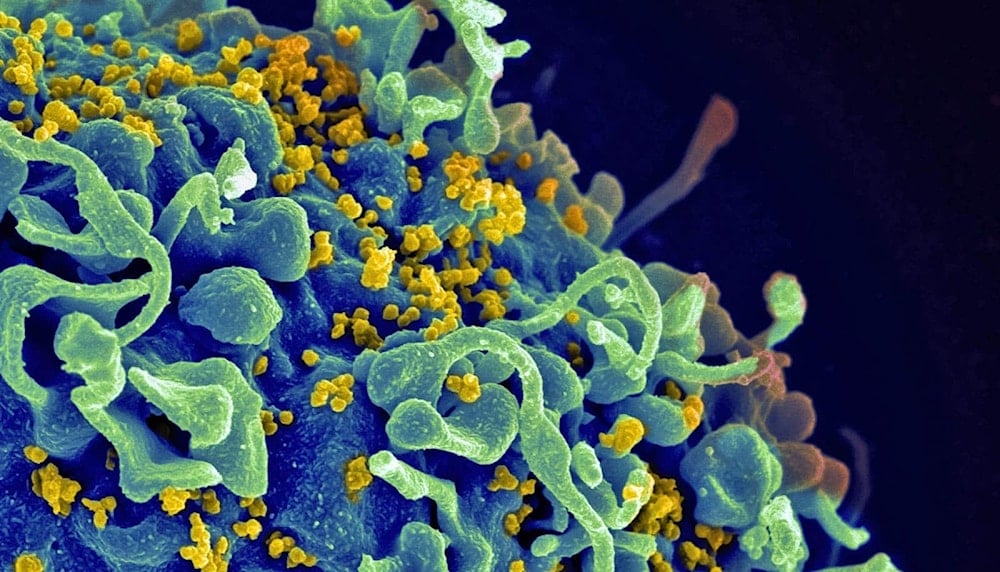New mRNA breakthrough could bring HIV cure closer than ever
The breakthrough offers new hope for 40 million people living with the virus.
-

An illustration of the HIV virus (Credit: National Cancer Institute/Unsplash)
Researchers in Melbourne have made a major breakthrough in the search for a cure for HIV, using mRNA technology to force the virus hiding inside human white blood cells out.
The study, conducted by the Peter Doherty Institute for Infection and Immunity, could pave the way toward finally clearing HIV from the body, something long thought unachievable due to the virus’ ability to evade detection.
The virus’ stealth lies in its capacity to remain latent in specific immune cells, forming what scientists call a “reservoir".
This reservoir is untouchable by current antiretroviral therapies and invisible to the immune system, making a complete cure nearly impossible, until now.
The breakthrough, published in Nature Communications, centers on a new method of delivering mRNA into the white blood cells where HIV hides. Scientists developed a redesigned fat-based casing called LNP X (lipid nanoparticle X), which successfully delivers the mRNA payload into these resistant cells. Once inside, the mRNA instructs the cell to force the dormant virus out.
How mRNA is powering a personalized vaccine revolution.
— Nature Medicine (@NatureMedicine) July 29, 2024
Read the latest in the Clinical Pipeline, by @TechTyperhttps://t.co/tX1QfcGhwA
“It was previously thought impossible,” said Dr Paula Cevaal, research fellow at the Doherty Institute and co-first author of the study. Traditional LNPs used in Covid-19 mRNA vaccines, like those from Pfizer or Moderna, were ineffective in reaching the cell types harboring HIV. But with the new formulation, researchers saw unprecedented results.
“When we first saw the data, we were overwhelmed,” Cevaal said. “It was a night and day difference—from not working at all, to working dramatically well. We’ve now repeated the tests many times.”
Major step, but cure still years away
While the results represent a significant step forward, scientists caution that a cure is still a long way off. The study was conducted in lab settings using white blood cells donated by HIV patients. The next phases will require animal testing and eventually human trials to evaluate both safety and effectiveness.
“In biomedicine, many things don’t make it into the clinic,” Cevaal noted. “But in HIV cure research, we’ve never seen anything this promising in terms of how effectively the virus can be revealed.”
The method will also need to be paired with a mechanism to fully eliminate the virus after exposure. Simply making the virus visible may not be enough unless the immune system or a secondary therapy can clear it.
Experts urge caution but hail potential
Dr Jonathan Stoye, a retrovirologist at the Francis Crick Institute, called the Melbourne team's approach “a major potential advance.” While he emphasized that critical questions remain, such as whether revealing most of the viral reservoir is sufficient, he praised the work as a key milestone in therapeutic mRNA delivery to blood cells.
Dr Michael Roche, co-senior author and a researcher at the University of Melbourne, added that the technique could have broader applications beyond HIV, since the same immune cells are involved in other conditions, including certain cancers.
Implications for cancer, other diseases
The potential reach of this discovery may extend into oncology and immune-related diseases, given the central role of white blood cells in multiple pathological processes. However, the focus remains firmly on HIV for now, as nearly 40 million people worldwide live with the virus and must rely on lifelong treatment to prevent progression or transmission.
UNAIDS reported that in 2023, one person died of HIV every minute. A functional cure would change the lives of millions, ending dependence on antiretrovirals and reducing global transmission risk to near zero.
As Jean-Pierre Routy, an HIV specialist unaffiliated with the study, recently noted, “Targeting the reservoir is the holy grail of HIV research. If this method holds up in further testing, it could bring us significantly closer to that goal.”

 4 Min Read
4 Min Read










